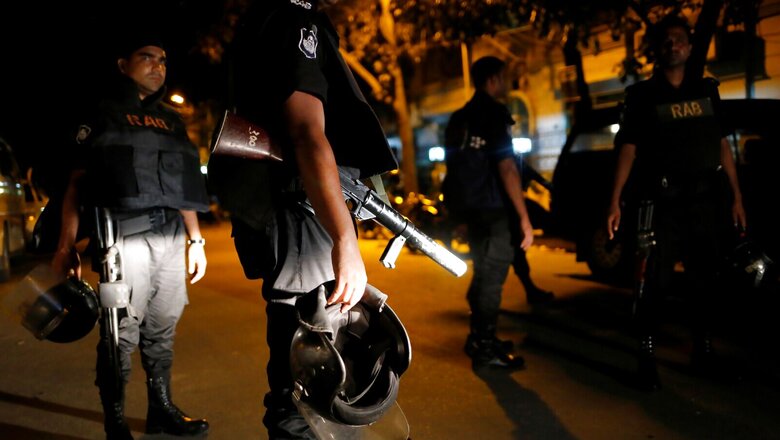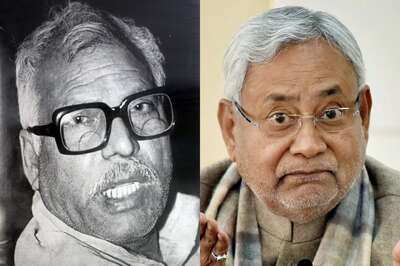
views
In a recent interaction with the authors of this article, senior security officials drew a rather sceptical and caustic picture of the radicalisation scenario not just in Assam but all over India. Almost 99 per cent of the experts were of the belief that Islamist radicalisation which is being tom-tommed is unfounded, without substance and that reports do not corroborate any of the aspects that have been stated in the media. The stance was particularly surprising as it emanated from the ground. The simplest of explanations given was that even though Bangladesh abuts Lower Assam closely, the manner in which Islamist radicals are being controlled, thanks to the dispensation of Sheikh Hasina, is preventing an overflow of radicalisation into India.
However, analysis holds its own and in this case, foundations of radicalisation demand further scrutiny. Even though the Sheikh Hasina dispensation has been, in earnest, focused on curbing the rise of Islamist groups within Bangladesh, in addition to being a responsible friend to India, the fact is one has to understand the semantics of radical Islam and its militant form.
To begin with there are five key mazhabs or schools in Islam. The primary ones are a) Hanafi b) Shafei c) Maliki d) Hanbali and e) Zafariya (which is chiefly Shia). The Muslims of India are predominantly from the Hanafi sect of Islam. The sect adheres to the school of thought propounded by Imam Abu Hanifa and is considered the most liberal of the four Islamic schools of thought. However, it is the Hanbali school that clearly is the chief sect driving the actions and motivations of formations such as al-Qaeda and ISIS (although there are member of other sects in both the groupings as well). The fact of the matter is that with the “entrance” of both al-Qaeda in the Indian Subcontinent (AQIS) and ISIS by way of the Waliyah-i-Hind (Guardianship of Hindustan) in India, there is a possibility that the current atmosphere could witness radicalisation of an important group of Muslims in India.
Subsequently, the phenomenon of radicalisation can be attributed to the growing influence of the Hanbali school in the country by way of resurgence of the Popular Front of India (PFI). However, PFI — whose top leadership are primarily from Kerala — denies allegations that the organisation has any relationship with the Hanbali school (another name for Wahabi and/or Salafi), irrespective of the fact it has been radicalising Indian Muslims towards the conservative strain of Islam.
Further, the Hifazat-e-Islam Bangladesh (HIB) and Islami Andolan Bangladesh (IOB) in erstwhile East Pakistan — Islamist formations that have re-emerged in current times — are close associates of PFI. The HIB and IOB are working inside Bangladesh as over ground activists of al-Qaeda- and ISIS-affiliated organisations such as Jama’atul Mujahideen Bangladesh (JMB) and Ansarullah Bangla Team (ABT). Bowing to immense pressure from Sheikh Hasina’s Counter Terrorism and Transnational Crime apparatus of Bangladesh, both JMB and ABT have curtailed their activity for the present, propping up instead surrogates by way of HIB and IOB. The stratagem is simple. The methodology is to instill a sense of complacence in the establishment that promotes the idea that JMB and ABT have disappeared. On the contrary, the reality is that they have activated “Op Confusion” in Bangladesh as well as rejuvenated Islamism.
Indeed, a deliberate interlude or a tactical retreat is a time-tested stratagem of war. The authors are reminded of a book “A German General on the Eastern Front: The Letters and Diaries of Gotthard Heinrici, 1941-1942” by Johannes Hurter. It makes interesting reading in the contest of the article and, therefore, merits a passage at this juncture. The excerpt states, “General Heinrici was a master of tactical retreat. The German general would attack the Russians and craft a gain and halt when his attack ran out of steam. He would swiftly construct a fake fortification on the freshly attained forward positions in order to create a ruse. Heinrici would then instantly pullback his forces five to six miles to a pre determined line of defence. The next morning the Russians would unleash an artillery barrage on the fake German front line, and deploy numerous divisions after the cessation of the artillery barrage. The ruse worked and the Russians on reaching the “fake front line” — with no one there — would run out of steam. At the same time Heinrici would be closely surveying the Russian artillery barrage and the send his army forward toward the exhausted Russians and stage a counter attack, often attaining a victory. The general used this tactic repeatedly. The Russians apparently never quite figured out how he succeeded in duping them.”
The point being made is that although ISIS has experienced territorial defeat, it has been able to confuse the enemy with its continual subterfuges, turning disadvantages into advantages. Both al-Qaeda and ISIS have once again joined forces (they were always one and the same despite what some short-sighted observers seem to have surmised) and it is incumbent upon the enemy to fathom their presence amongst a population that has become even more resolute. The determination emanating a) from the spectacular successes that had been achieved by the al-Qaeda and ISIS since 9/11 and b) the accentuated line that has been drawn by way of “us and them”. Incidentally, in this regard, the opposing forces are also responsible for accentuating the divide with certain right-wing factions fanning deliberate fires of suspicion. A clear-eyed analysis would, therefore, bring to the fore the simplicity with which the Islamists have been able to not only rest, recuperate and turnover, but are readying themselves for the next onslaught.
Therefore, whereas there was exhibition of massive violent movement and radicalisation between 1999 and 2005 which the authors describe as the “First Wave”, the “Second Wave” began with the “oath of allegiance” or Bay’ah by groups such as JMB and ABT to ISIS in the wake of the formation of the neo-caliphate of Abu Bakr-al-Baghdadi. It was also the time to undertake the hijrah in response to the “call from ar-raqqa”. The territorial setbacks witnessed persistent “lone-wolf” attacks throughout the world including places such as Orlando and Nice and observers of Islamist action in Bangladesh would recall the “hostage situation” in Dhaka on July 1, 2016 and the machete killings and suicide bombings in the years following the event. The new “call to arms” was to decimate the infidel wherever found as the hijrah was no longer an undemanding affair.
However, relentless action by the Bangladesh security forces against the Islamists have quietened the radicals momentarily and the “battle” has been — temporarily — handed over to the good offices of HIB and IOB who are keeping the movement alive by demanding aspects such as the enactment of “Blasphemy Laws”, non-erection of statues (primarily that of Sheikh Mujibur Rahman) which they state is un-Islamic, and making “Islamic education mandatory from primary to higher secondary levels, cancelling the women policy and anti-religion education policy” and “freedom for all arrested ulema and madrassa students and withdrawal of all cases filed against them, compensation for the victims, and bringing the assailants to justice”.
However, with the near-total territorial ouster of ISIS from the areas that it had occupied in Iraq and Syria, the strategy is about to witness a sea change. Egged on by al-Qaeda and ISIS, which is already inside India, their affiliates (including PFI) would throw open the gates of radicalism and don a form that would be hitherto the most menacing. It would be a combination of a) mass recruitment b) protests against acts, laws and ministration that a combined grouping of radicals considers un-Islamic — thereby bringing into their fold fence-sitters and moderates among the minority community and c) let loose sophisticated forms of violence that most agencies would not be able to even imagine.
Guidebooks and couched aggression that steer the “warrior genes” inside both a deviant mind and a radical are aplenty, and so are off-the-desktop explosive manuals that can showcase how a lethal weapon is assembled with relative ease. Triacetone Triperoxide, an explosive known as the “Mother of Satan”, which was reportedly first used in the Paris bombings of November 13, 2015 and one which fits easily in a jacket — reports suggest — seems to have emerged as the flavour of the times. Memories of Shakira, wife of Rashedur Rahman Sumon, a hardcore pro-ISIS, Neo-JMB cadre blowing herself up with her infant in her lap on December 26, 2016 should be sufficient proof about the manner in which an “aping-exercise” would be engendered by Indian counterparts in what the authors presage as the dawn of the “Third wave” of Radicalisation.
India can be sure of its own approach towards the inflow of radicalisation from Bangladesh and its networks in India. Radicalisation can never cease, it can only be suspended. And it is from that premise that Indian agencies must prepare for an onslaught that is inevitable. The only certainty that remains to accepted is “where there is a “Third Wave”, there will be a “Fourth”.
Rami N. Desai is a conflict analyst and anthropologist with over a decade of experience in the northeast region. Jaideep Saikia is also a conflict analyst and a celebrated author of over 14 books on security. The views expressed in this article are those of the authors and do not represent the stand of this publication.
Read all the Latest Opinions here




















Comments
0 comment